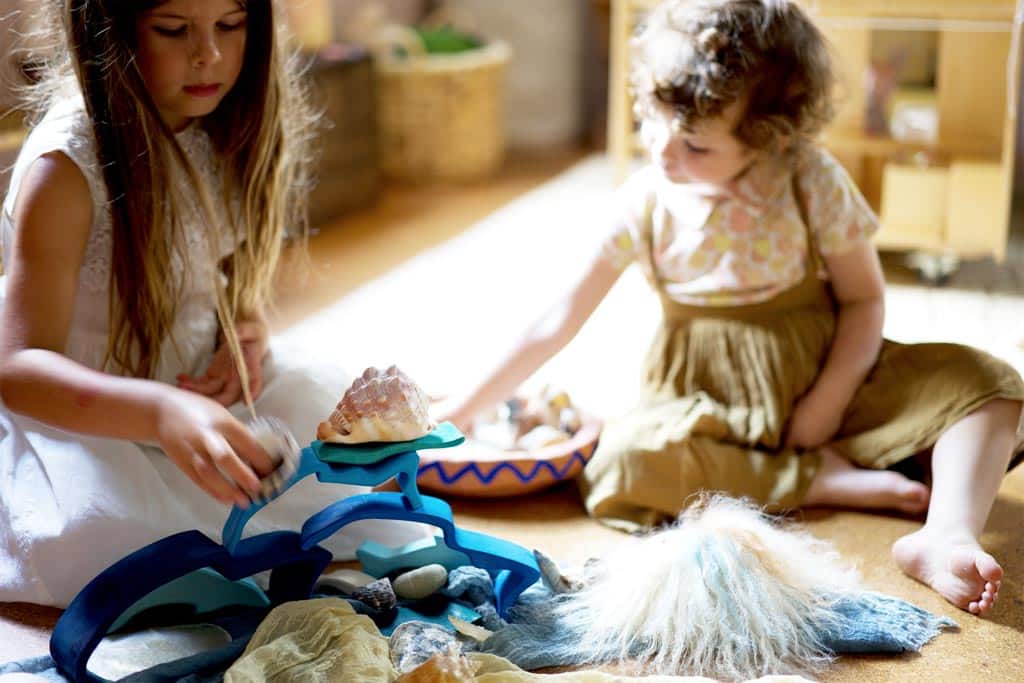The night Max wore his wolf suit and made mischief of one kind
and another
his mother called him “WILD THING!”
and Max said “I’LL EAT YOU UP!”
so he was sent to bed without eating anything.
And so begins “Where the Wild Things are”, by Maurice Sendak. Like The Three Little Pigs and The Hobbit, it’s a story that has stood the test of time.
But why? What explains the enduring appeal?
Since time out of mind, myths and traditional tales have relied on a formula. It makes for satisfying stories with just the right mix of drama and suspense. Best of all, we can use it to make our children’s play better.
What is the hero’s journey?
In his book “The Hero with a Thousand Faces”, Joseph Campbell identified a universal narrative structure that he called ‘the hero’s journey’.
It describes the voyage of a character who sets out on an epic quest, faces challenges, and returns transformed. There are three main stages. For a more detailed look, see the appendix at the bottom of this post.
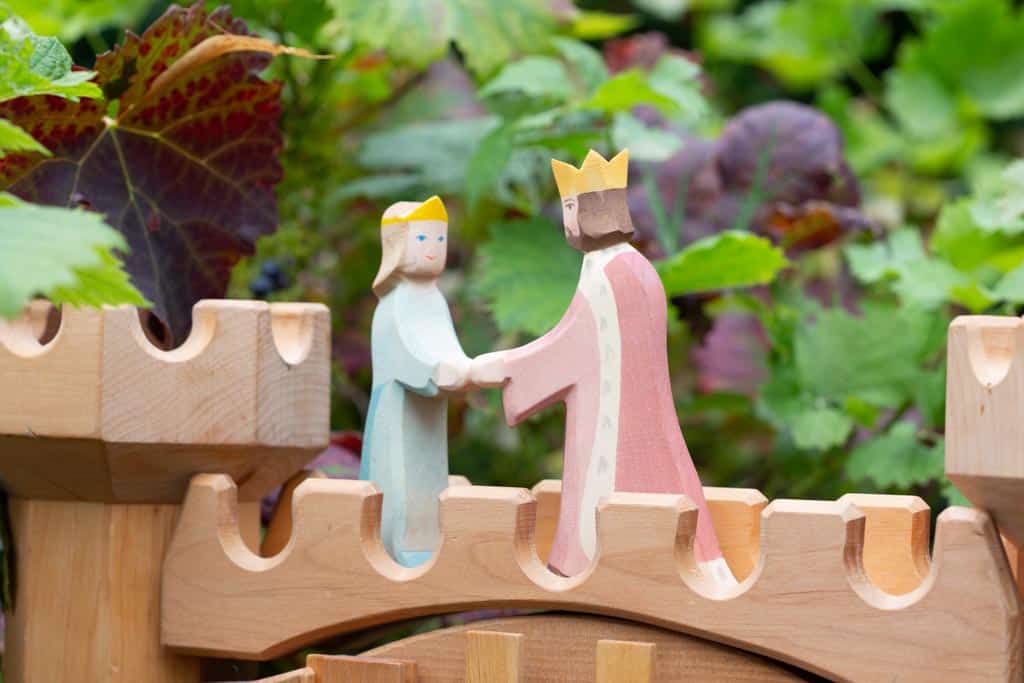
- Departure (or Separation). The tale begins in the ordinary world. Here, the hero gets a call to adventure. Though she might be reluctant at first, a mentor often encourages her to step into the unknown.
- Initiation. In this phase, the hero undergoes challenges, meeting both friends and foes. There’s a pivotal moment, known as the ‘abyss’, where she confronts her deepest fears. Triumphing over this, she gains wisdom or a special artefact.
- Return. With her new understanding or power, the hero returns to her starting point. She might face one last challenge here. Once she overcomes it, she reintegrates into her community, often bringing back lessons or gifts.
Can you see how the hero’s journey offers a roadmap for your child’s imaginative play? By introducing these archetypal patterns, you can help her craft stories that are not only fun but also layered with meaning.
Of course, such ideas are too complicated to explain to a toddler or preschooler but we can do something even better – explore them through play.

“Matilda” by Roald Dahl
- Ordinary world. Matilda is a gifted child living with her uncaring and ignorant family.
- Call to adventure. She discovers she has telekinetic abilities.
- Trials: Matilda is mistreated by both her parents and the tyrannical Trunchbull.
- Transformation. Using her wits and newfound powers, she vanquishes Miss Trunchbull and claims her inheritance.
- Return. Matilda finds happiness with Miss Honey.
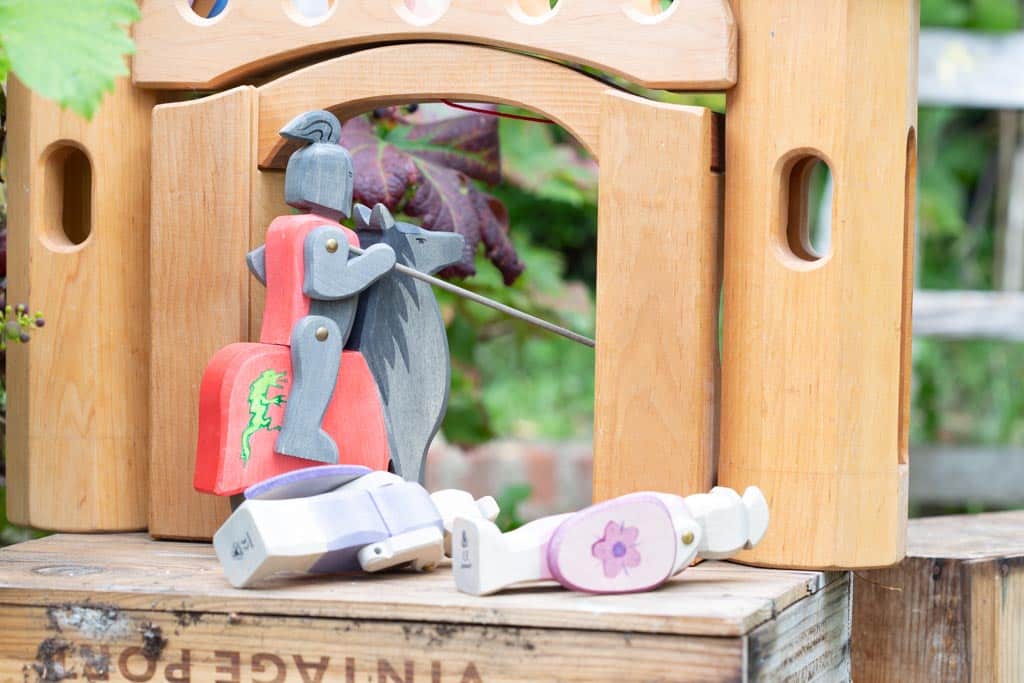
Introducing the hero’s journey to your child
If you’ve ever tried writing a story with your child, you’ll understand how difficult it is to get the story arc right. Events are haphazard, endings sudden and the plot devoid of meaning.
But it’s a skill that all children must master once school begins.
You can help your child by exploring the hero’s journey through play. Then, when the time comes to write, she is ready.
Let’s see how this can be done through small world play, though it works equally well with role play and puppet play.
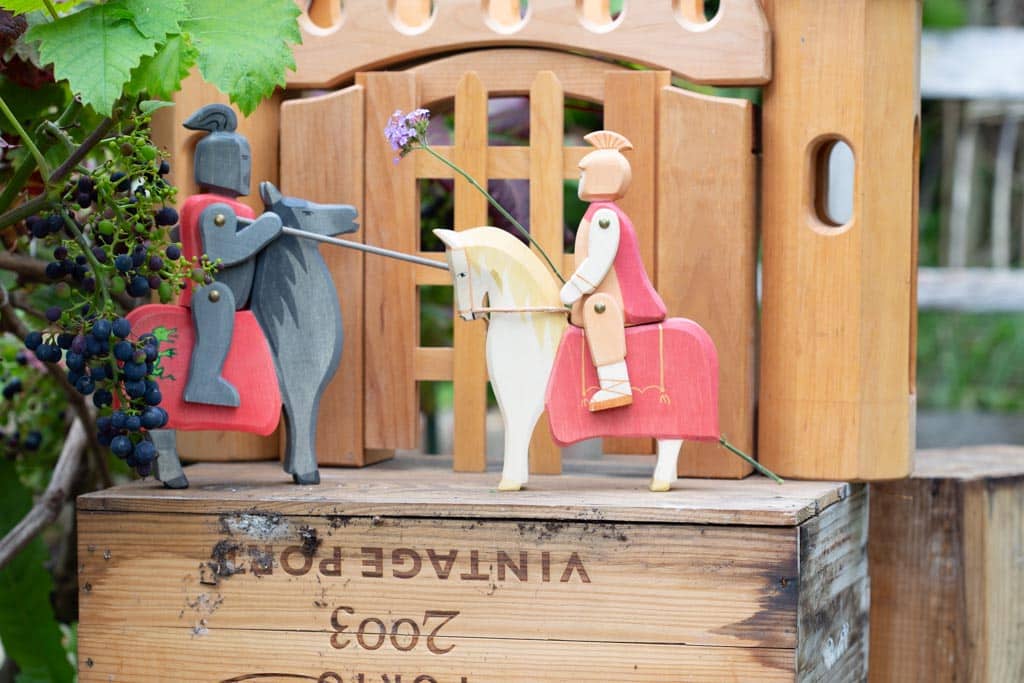
Create a starting point
Every great story begins in the familiar. Not familiar to your child, necessarily, but to the hero. Where does she live? A house, a cave, a castle? Start there.
Introduce a challenge
Propose a problem or adventure. Perhaps a character has lost something precious or a mysterious stranger arrives with a quest. These challenges set the stage for the hero’s departure.
Add friends and foes
Every hero needs a villain. A baddie adds depth to the story and gives your child the chance to explore different character dynamics. Perhaps your hero lacks confidence or knowledge. A guide or mentor can help. Think Gandalf and Frodo, in The Lord of the Rings. In an upcoming post we’ll look at how basing your choice on archetypes maximises the play potential – and the drama.
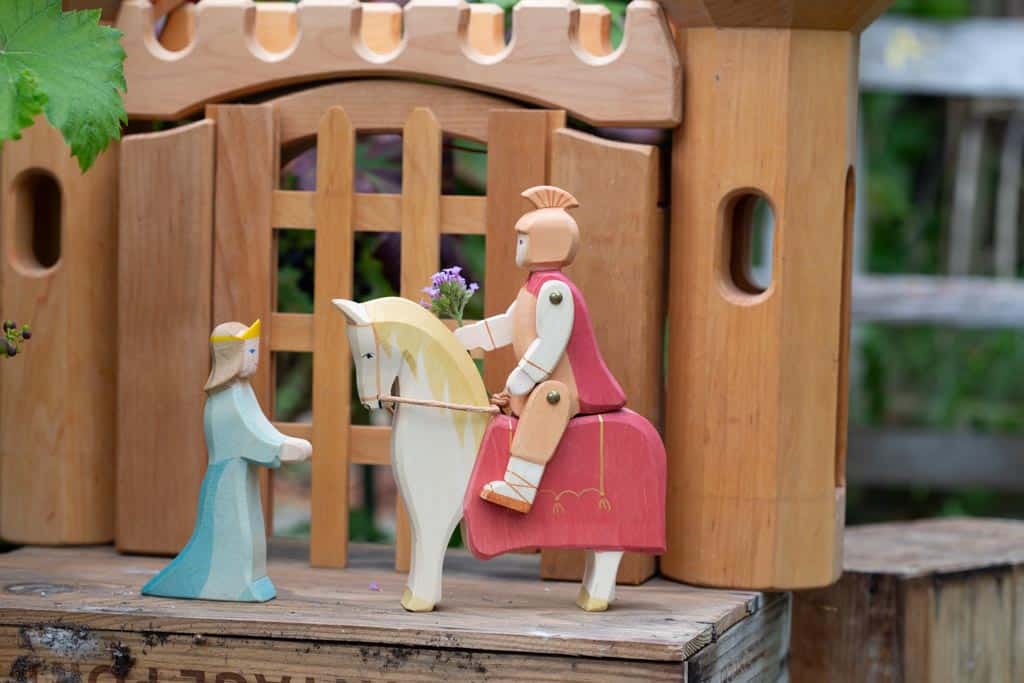
Celebrate the transformation
When the hero returns from her adventure, it’s a cause for celebration. Emphasise the lessons she’s learned and the gifts she brings back. This reinforces the idea of growth and transformation.
In other words, get some figures and create a small world scene for them to inhabit but be intentional about it. Choose figures and locations that go together.
Start with a book
Your child won’t grasp the concept straight away.
The best way to start is with a prompt. Find three bears, a doll and a doll’s house (or a shoe box).

Place a picture book of Goldilocks alongside it and watch your child get to work.
Perhaps you have a witch, a boy and a girl.

Add a bird and trail of breadcrumbs (or berries!) to heighten the tension.

Depending on how familiar your child is with the story, she will soon start to ad lib.
And that’s the point. That’s our goal. To make new stories.
The hero’s journey gives us the structure to make them better.
Even if you don’t have exactly the right figures, your child will fill in the gaps with her imagination.
A ram and a wolf will do just fine as the big billy goat and the troll. The bridge gives context and invites the story.
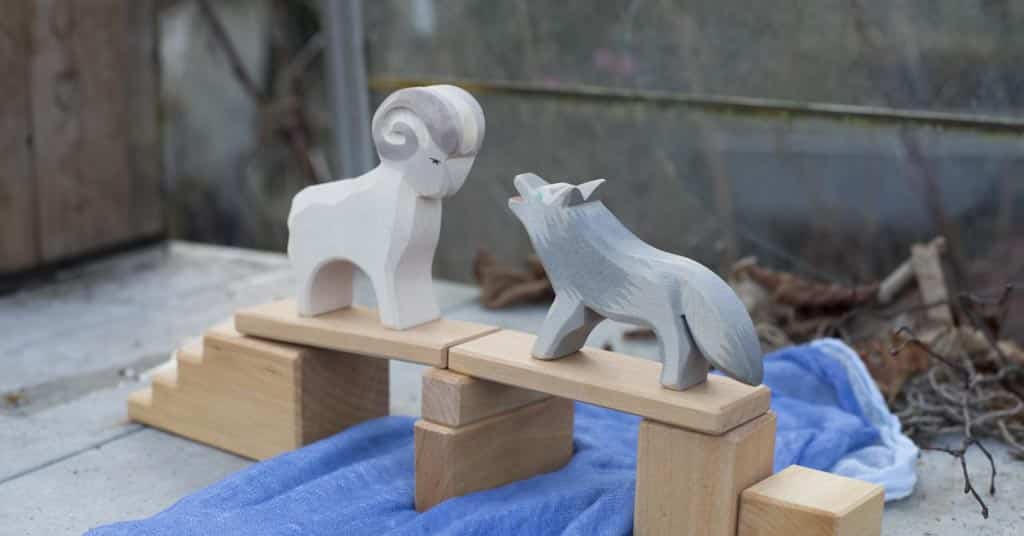
Our children make mental representations of common actions and forms, like rotations and enclosures. These are schemas, a toolkit for tackling any activity.
In the same way, a repertoire of plot archetypes and plot points is a toolkit for creating stories. Our brave goat is ’overcoming the monster’, an idea that can be used in many other contexts.
This is why it’s so important to read to your child. You are feeding her mind with plot lines and characters.
Good books are compost for the imagination. They help it grow.
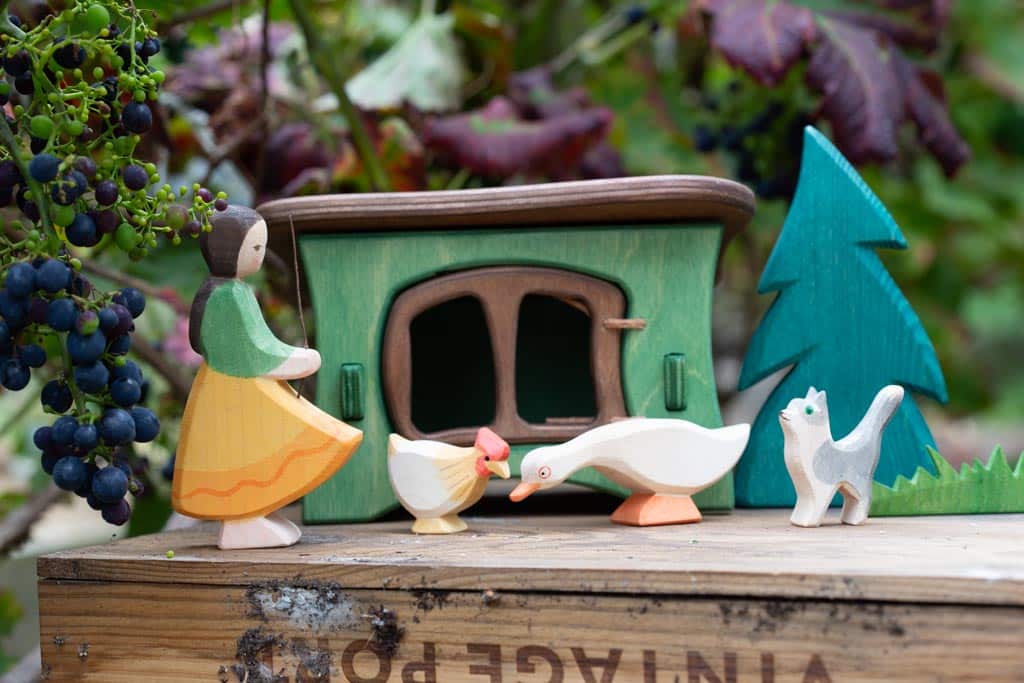
“Lost and Found” by Oliver Jeffers
- Ordinary World: A boy discovers a penguin on his doorstep.
- Call to Adventure: He decides to help the penguin find its way home.
- Trials: They journey across seas and face various challenges.
- Transformation: The boy realises the penguin is looking for a friend, not home.
- Return: They return together, solidifying their bond of friendship.
The hero’s journey as a tool for writing
At some point, your child won’t be satisfied with simply telling a story through play. She will want to write it down.
The hero’s journey, with its structured framework, provides a great scaffold for young writers. Here’s how you can introduce it to your child:
1. Choose a familiar setting
Encourage your child to begin her story in a setting she knows well. It could be her own home, a relative’s house, or even her school. This ‘ordinary world’ forms a relatable foundation for the upcoming adventure.

2. Introducing a challenge
What could happen to disrupt the ordinary? Maybe a magical bird drops a mysterious note or the protagonist discovers a hidden door in her house.
3. Characters and guidance
Brainstorm different characters. Who might be the wise mentor? Perhaps a grandmother with secrets, a talking pet, or a magical tree.
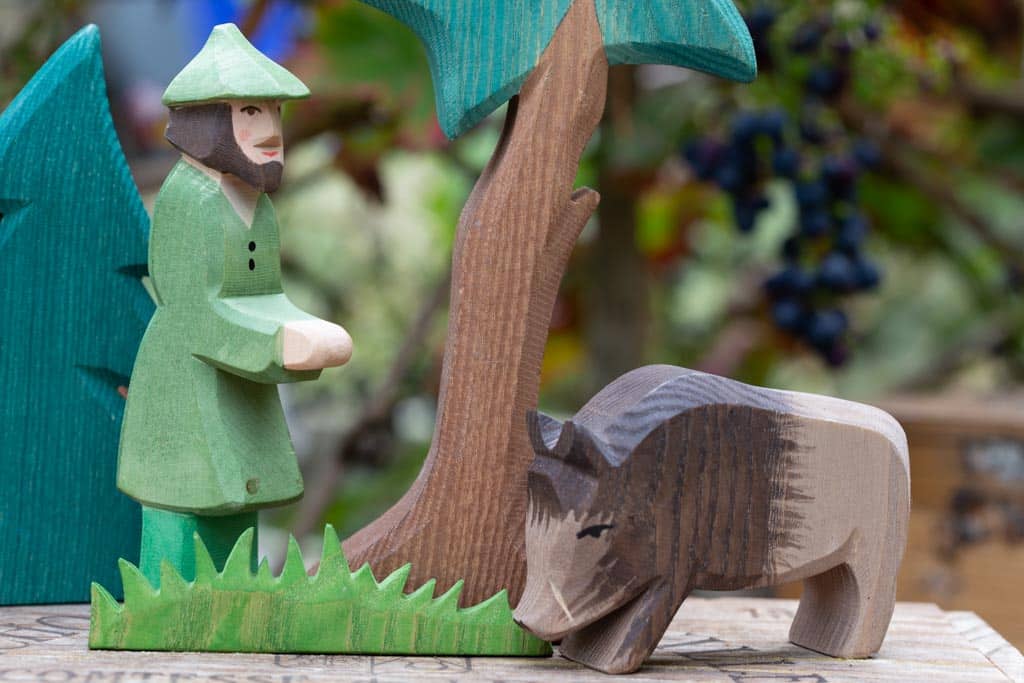
4. Mapping the adventure
Using the hero’s journey stages, plot out the main events. A visual map, with drawings or post-it notes, can be a fun way to structure the narrative. I don’t know about you but I used to love books containing maps of the journey on the inside cover. Can you picture the maps in The Wind in the Willows, The Hobbit and Peter Pan? Drawing your own might inspire ideas for the story.
5. Embracing emotions
The hero’s journey is filled with ups and downs. How might she feel during each stage? Adding emotion makes the story more engaging and relatable.
6. The prize
Every challenge faced by the hero can lead to rewards or insights. What might the hero bring back after her adventure? This could be a tangible item, a lesson learned, or new friendships formed.
7. Revision through play
Before writing, let your child act out the story using her toys. This playtime can help refine the narrative, fill in gaps, and spark additional ideas.
8. Create illustrations
Drawing scenes from the story can enhance your child’s connection to the narrative. Illustrations can also serve as prompts when she’s writing.
9. Celebrate the Story
Once your child has written her story, take the time to read it together. Praise her efforts, and if she’s comfortable, share it with family members or friends to enjoy.
By using the hero’s journey as a blueprint, your child can craft stories that have depth, emotion, and a clear structure. Not only does this framework support literacy, but it also fosters creativity, empathy, and an appreciation for the art of storytelling.

If your child is too young…
Of course, your child might be too young to write such a long piece, but she can still produce a riveting story. The trick is to do the writing for her.
- Draw a picture for each event. You might like to ‘play’ the story first, using small world toys.
- Ask your child to describe what’s happening in each picture and write down exactly what she says. You now have a captioned story in your child’s own words.
- Stick the pages together to make a book, not forgetting front and back covers. Use glue, staples, treasury tags or even bulldog clips.
This is known as ‘story scribing’, an idea we explore in more detail in Get Set Five.
It’s a great way for younger children to feel the pride of creating a story that can be shared with others. Put it on your bookshelf and count how many times your child pulls it out to ‘read’ over the coming weeks. It’s sure to be the most popular book in the house.
”Where the Wild Things Are” by Maurice Sendak.
- Ordinary World: Max is at home, causing mischief.
- Call to Adventure: He is sent to bed. His room is transformed into a jungle.
- Trials: Max sails to an island inhabited by wild creatures.
- Transformation: He becomes the king of the wild things but he feels lonely. He realises he would rather not be a Wild Thing.
- Return: Max sails back to his room and finds his supper waiting for him.
Final word
By integrating the hero’s journey into your child’s play, you’re not just giving her a story structure. You’re offering a chance to delve into themes of courage, friendship, and discovery. And remember, it’s not about sticking rigidly to the structure but using it as a starting point. Let your child’s imagination take the lead, and you’ll be amazed at the tales she weaves.
Look out for an upcoming post, continuing the theme, where we look at mythology and archetypes and how they can extend your child’s play even further.
Lastly, if you’d like a more detailed look at the hero’s journey, you can read it here:
Understanding the Stages of the Hero’s Journey
Depending on your child’s age, you might want to develop her story even further.
1. The ordinary world
Before the adventure begins, the hero exists in a normal, often mundane world. This is the familiar ground where your child’s toy starts, whether it’s a simple home setting or a peaceful village.
2. The call to adventure
Something disrupts the ordinary world. It could be an internal call or an external challenge or threat. This is where your child’s toy might hear of a distant land or receive a mysterious message.
3. Refusal of the call
Initially, the hero might be hesitant or resistant to change. They might doubt themselves or feel the risks are too great. This phase allows your child to express feelings of doubt or fear in play.
4. Meeting the mentor
At this point, the hero encounters someone who provides advice, training, or a crucial item for the journey. In your child’s play, this could be an older toy, a wise animal, or even a magical entity.
5. Crossing the threshold
This is the turning point where the hero fully commits to the adventure. There is no turning back. They leave the ordinary world behind and enter a new, unfamiliar territory. Your child might simulate this by venturing into a ‘magical’ part of the play area or moving to a new backdrop.
6. Trials, allies and enemies
The hero faces a series of challenges, but also makes friends along the way. Each trial helps them prepare for greater challenges ahead. During play, your child might introduce obstacles or new characters that the hero toy has to interact with.
7. Approach to the innermost cave
The hero comes close to their main goal or the central conflict of the journey. It’s a moment of reflection and gathering strength. Your child’s character might set up a camp or find a secret hideout in anticipation.
8. The abyss
This is the hero’s darkest hour. They face their greatest fears and confront the biggest challenge of the journey. Your child might enact a dramatic battle or a difficult puzzle that needs solving.
9. Reward
After confronting the biggest challenge, the hero receives a reward, trophy, or insight. In play, this could be a magical item or some wisdom the hero toy gains.
10. The road back
With the reward in hand, the hero starts the journey back to the ordinary world. But this isn’t always easy. Your child might create more challenges or an exciting chase sequence.
11. Resurrection
Just before returning to the ordinary world, the hero might have a final, climactic confrontation. This is the ultimate test of what they’ve learned. In play, this could be the most dramatic and imaginative part.
12. Return
The hero returns home, transformed, with something that can benefit the ordinary world. This could be a magical elixir, a solution to a problem, or newfound wisdom. This is where your child’s hero toy might celebrate, share the newfound ‘treasure’ with others, or heal a broken aspect of their world.
Understanding the intricacies of the hero’s journey can help you provide gentle prompts or introduce new elements during play, assisting your child in weaving richer, more intricate narratives.



